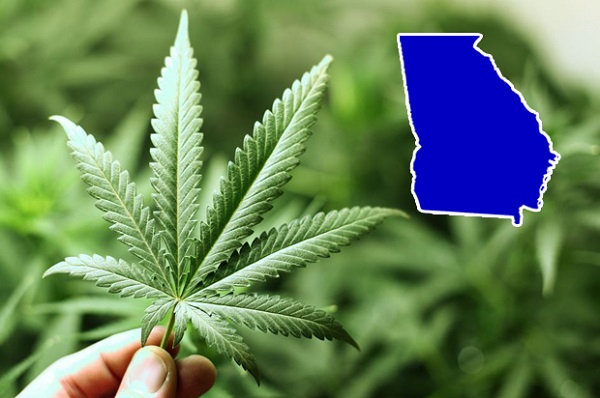In Austria, cannabis was recognized as a medicinal plant of the year, which stimulated a review of scientific research by many scientists in the field. Since the widespread legalization of medical cannabis, the amount of information about the previously banned plant has increased significantly. Numerous studies confirm what patients already knew beforehand, some refute old myths, and others surprise even the most experienced cannabis experts.
This article is only a small part of current cannabis research. Ultimately, the current state of research is not as bad as is often assumed. Back in 2010, NORML’s director, Paul Armentano, called cannabis one of the most studied substances. In this context, he was referring to the more than 20,000 studies and scientific papers on cannabis. At this point more than 10 years have passed and still the frequency and volume of research on cannabis is increasing.
Searching for fakes

In September, cannabinoid researcher Ethan Russo presented his third study at the IACM Cannabinoid Congress in Cologne, demonstrating that the classification of cannabis into Sativa and Indica varieties has no scientific basis.
Jeffrey Raber was the first to express doubts about this classification in 2013 (http://www.laweekly.com/news/marijuana-strains-like-og-kush-are-meaningless-expert-says-4173909). Raber, owner of a medical marijuana research lab in California, argued that after analyzing more than 1,000 varieties of cannabis, there is no scientific basis for the different effects of cannabis. “OG Kush” from cannabis dispensary “X” is significantly different from “OG Kush” from dispensary «Y”.
The study presented by Dr. Russo of Dalhousie University, which was conducted in collaboration with Bedrocan, confirms Raber’s findings and an earlier study conducted by Dalhousie University in 2015 (http://journals.plos.org/plosone/article?id=10.1371/journal.pone.0133292).
In the current study, scientists were not able to detect genetic differences between the Indica and Sativa samples. However, thanks to the terpene profiles from the study, it was possible to draw conclusions about the origin of the individual strains. “It is more likely that strains are classified based on their varied flavors rather than on their genetic origin,” the study’s press release (http://journals.plos.org/plosone/article?id=10.1371/journal.pone.0133292) noted.
100 million euros of cannabis taxes
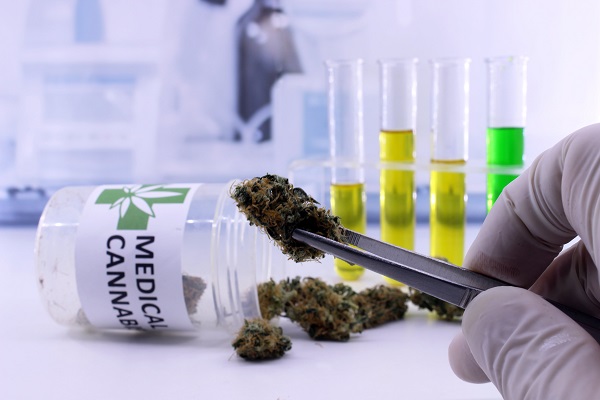
The American company Seedo conducted a study to determine, among other things, the potential tax revenue from cannabis, based on average per capita consumption (http://weedindex.io/#methodology).
What are the results? In Berlin the tax authorities could receive 92 million euros annually; in Hamburg and Munich the city budgets could be bolstered by an additional 40 million euros. The world leader in these statistics is Cairo, with a theoretical tax revenue of 307 million euros from cannabis.
Cannabis saves thousands of lives
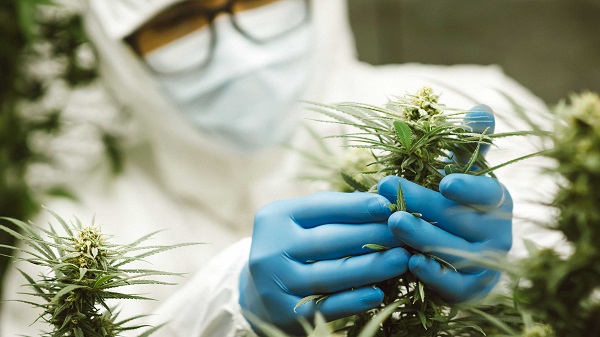
There are serious problems with prescription painkillers in the United States. Each day about 90 people die from an overdose of hard drugs. According to a study published by the American Medical Association, opioid-related deaths have decreased significantly in U.S. states thanks to the medical cannabis program (cannabinoid substitution therapy).
The study indicates that the U.S. can reduce the abuse of highly addictive narcotic painkillers by expanding such programs and, as a result, reducing opioid-related deaths.
According to a 2017 study published by Indiana University, medical cannabis can save up to 47,500 lives each year nationwide and is now already preventing between 17,400 and 38,500 premature deaths annually (https://www.nber.org/papers/w21345#Do%20Medical%20Marijuana%20Laws%20Reduce%20Addictions%20and%20Deaths%20Related%20to%20Pain%20Killers?).
Cannabis has an anticonvulsant effect
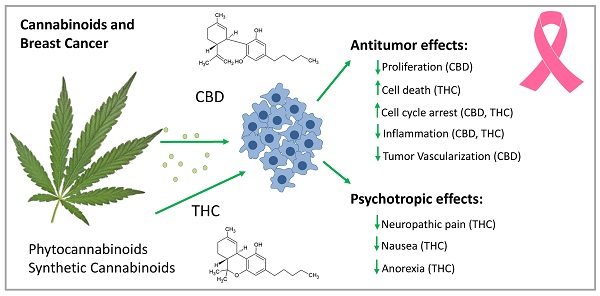
According to a study, about 5% of children with epilepsy suffer from Lennox-Gastaud syndrome. Most patients with the syndrome do not stop having seizures, even with treatment with approved agents such as clonazepam, lamotrigine, rufinamide or topiramate.
A study conducted by Massachusetts General Hospital in Boston found that cannabis administration reduced seizures by 44% compared to 22% in the group taking placebo (http://www.thelancet.com/journals/lancet/article/PIIS0140-6736(18)30136-3/abstract). In addition, cannabis had a positive effect on the proportion of patients among whom the number of seizure accidents decreased by 50% or more.
The overall frequency of seizures decreased by 41% compared with 14% in the group that took placebo. Moreover, patients or their caregivers often reported an improvement in their general condition.
Cannabis is ideal for the elderly
A U.S. study of drug use and health found that cannabis is becoming increasingly popular among older adults. Data from 2006 to 2013 were estimated. The relative increase among adults ages 50 to 64 was 58.4 percent. The relative increase among those over 65 was the largest among all age groups at 250% (http://onlinelibrary.wiley.com/doi/10.1111/add.13670/full).
Proper cannabis regulation
Unlike older people, young people don’t seem to be curious or open to experimenting with cannabis, even with a controlled market. In Colorado, where the effects of legalization have been carefully regulated for five years, the opposite is actually true.
According to the Colorado Department of Health, the 30-day prevalence of cannabis use among young people declined slightly in 2016 compared to 2011 (http://www.colorado.gov/pacific/cdphe/marijuana-health-report).
The 21.2 percent of young cannabis users was slightly lower than the 2016 United States average of 22 percent 30-day prevalence among young people that year. Thus, Colorado is reinforcing this trend for the second year in a row.
THC has a neuroprotective effect

According to a study published in the British Journal of Pharmacology, Δ9-tetrahydrocannabinol has neuroprotective properties. It is the most common cannabinoid in the cannabis plant. A Spanish study by the Instituto Maimónides de Investigacion Biomedica de Córdoba looks at Δ9-THCA as a possible treatment option for people with debilitating and degenerative diseases (http://onlinelibrary.wiley.com/doi/10.1111/bph.14019/abstract#THCA%20shows%20Neuroprotective%20ability).
Cannabis has a positive effect on libido
In a study published in the Journal of Sexual Medicine, researchers at Stanford University analyzed the results of a survey of 50,000 men and women between the ages of 25 and 45 regarding their health in the United States (http://www.jsm.jsexmed.org/article/S1743-6095(17)31417-0/fulltext).
Regardless of age, gender, ethnicity or circumstance, based on the information they provided about their cannabis use and frequency of sex, they found the following: regular cannabis users have sex 20% more often than non-consumers.
According to the Stanford research team, women who smoked marijuana had sex an average of 7.1 times in four weeks, instead of the usual 6 times, and for men the figure was 6.9 times instead of 5.6.
Cannabis helps patients with HIV
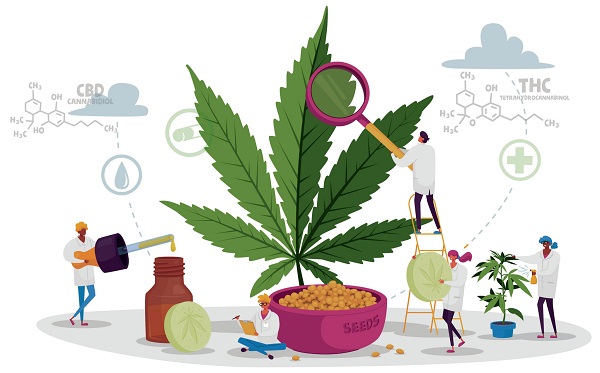
In November 2017, Michigan State University (MSU) published a potentially groundbreaking discovery: cannabis can help patients with HIV maintain their cognitive abilities.
As MSU study lead author Norbert Kaminski notes in the AIDS Journal, the cognitive function of many people with HIV is reduced due to chronic inflammation in the brain caused by constant stimulation of the immune system to fight disease (https://journals.lww.com/aidsonline/Abstract/publishahead/HIV_infected_cannabis_users_have_lower_circulating.97348.aspx).
A comparative analysis of cannabis and non-cannabis patients showed that non-cannabis patients had a lot of inflamed cells. At the same time, those who used cannabis had significantly lower levels of inflammation. According to Kaminski, the study leader, the level of inflammation in cannabis patients was close to that of a healthy non-HIV-positive person (https://journals.lww.com/aidsonline/pages/default.aspx).
Cannabis reduces crime
According to a long-term study, violent crime is declining in U.S. states bordering Mexico with a medical cannabis program (http://onlinelibrary.wiley.com/doi/10.1111/ecoj.12521/full). After laws were passed, violent crimes dropped by an average of 13 percent. Much of the cannabis consumed in the U.S. comes from Mexico, where seven major cartels control the illegal drug trade (https://www.theguardian.com/world/2018/jan/14/legal-marijuana-medical-use-crime-rate-plummets-us-study).
Economist Evelina Gavrilova, one of the authors of the study, told the Guardian newspaper in Britain that laws allowing legal cannabis cultivation in California allow local farmers to grow cannabis, which can then be sold to medical facilities legally. These growers are in direct competition with Mexican drug cartels who smuggle cannabis into the United States. As a result, the cartels make far less profit.
A study by Gavrilova and her colleagues based on FBI data from 1994 to 2012 found that changes in the law had the greatest impact in California. Here there was a 15 percent drop in violent crime, while Arizona recorded the lowest drop of any state with legal medical cannabis at 7 percent.
According to the study, violent robberies dropped by 19 percent after medical cannabis was legalized, and homicides in the states in question fell by an average of 10 percent. Drug-related homicides were the most notable, with a 41% decrease.



